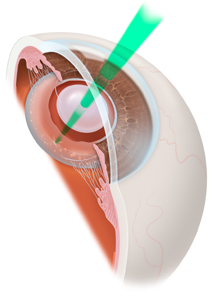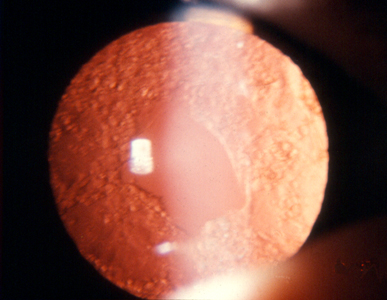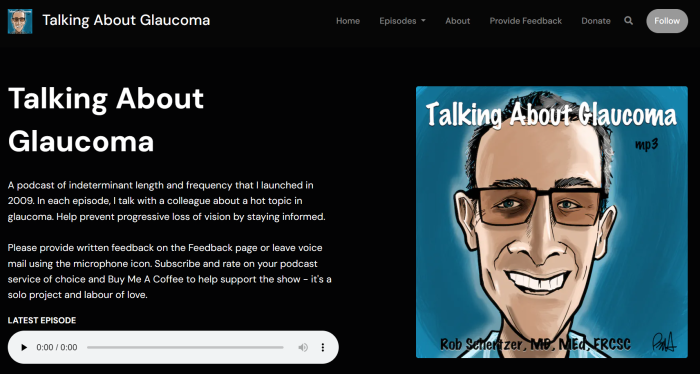How the posterior lens capsule gets cloudy
A posterior capsulotomy (YAG) is a laser procedure that may be necessary after cataract surgery. During cataract surgery, part of the front (anterior) capsule of the eye’s natural lens is removed to gain access to and remove the lens. The clear, back (posterior) capsule remains intact and supports an intraocular lens (IOL), a plastic or silicone disc that is implanted in the eye and replaces the natural lens. As long as that capsule stays clear, you will experience good vision. But in 10% to 30% of cases, the posterior capsule loses its clarity. When this happens, the ophthalmologist (Eye M.D.) can create an opening in the capsule using a laser to restore normal vision. This procedure is called a posterior YAG capsulotomy. (The “YAG” refers to Yttrium, Aluminum, and Garnet that were synthetic cyrstals that were stimulated to produce the laser frequency required for photodisruption. This has since been replied by diodes to achieve the same frequency of non-visible light.)


Capsulotomy procedure
Before the laser procedure, the ophthalmologist conducts a thorough ophthalmic examination to ensure there is no other underlying cause for the vision loss.
The posterior capsulotomy is painless and takes approximately five minutes. Eye pressure is measured 30 minutes after the operation to make sure it is not elevated, and anti-inflammatory medicated eyedrops are usually prescribed for three days following the procedure. Vision usually improves within hours.
Potential complications of capsulotomy
Potential but rare complications following laser posterior capsulotomy are “pitting” of the lens implant, subluxation of the lens implant, transient increase of intraocular pressure, retinal detachment.
© 2025, 2015 Dr. Robert Schertzer Inc., based on 2007 The American Academy of Ophthalmology


